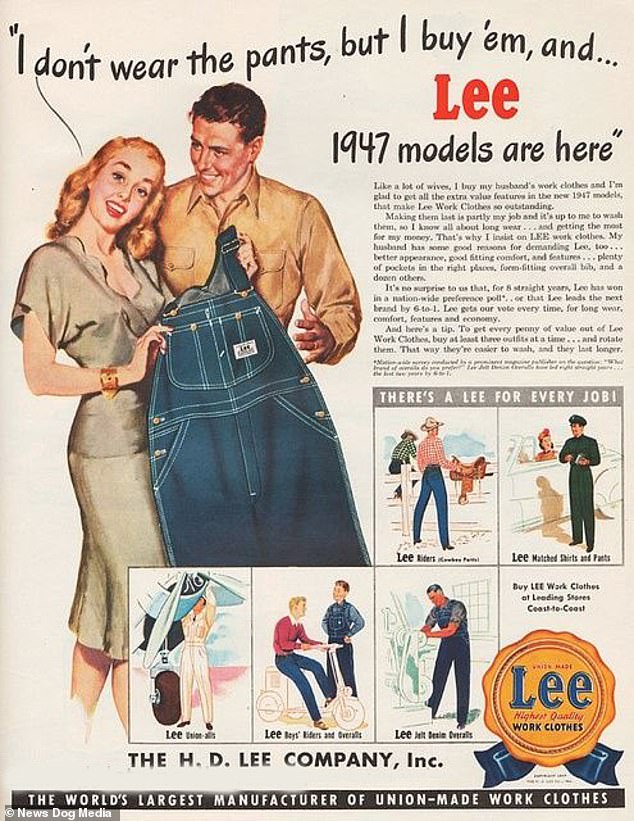
The denim jean and its predecessor the dungaree have a long history, and were traditionally seen as work wear for men.
But WWII changed all that...
But WWII changed all that...

As women headed for the factories and shipyards they found that a sturdy denim bib-n-brace, paired with a stout headscarf, was the way to go! 

Coarse heavy 'jeens' were fine for riveting work, but 1940s women didn't take a shine to them as leisure wear. For one thing they were voluminous and shapeless. 

Jeans were also seen as clothing for children. No adult wanted to be seen wearing kid's dungarees in public.
Or did they?
Or did they?

After WWII ended women's fashion initially reverted to type: mid-length in the skirt, long in the arm and with something fetching around the neck.
But one group of gals wasn't having any of it...
But one group of gals wasn't having any of it...

Bobby Soxers were teenage fans of pre-Rock 'n' Roll pop music - especially Frank Sinatra. They were also gang girls with a rigid look: ankle socks, sweaters, big shirts and rolled up blue jeans! 

Soxers were the first proto-teens: cliquey, raucous and determined to stand out. Soon they would be joined by many others. 

The moral panic over Rock 'n' Roll in the 1950s wasn't just about hot rods and rumbles - it also swept up the disquiet about independent teen girls that had been building since the Bobby Soxers. 

And nothing said 'trouble' louder than a young girl in blue jeans and a yellow sweater. Soon the look became a shorthand for teen delinquency! 

The 'dungaree set' were the girls you didn't let your daughter hang out with: they smoked, they drank, they ran with gangs, they made out with boys - a lot!
"Something must be done!" came the cry...
"Something must be done!" came the cry...

And jeans manufacturers cried it the loudest! Denim production had risen during the war and now they were looking for new markets to exploit. Could they make 'lady jeans' into a mainstay of a traditional woman's wardrobe? 

Starting in the mid-1950s manufacturers such as Lee, Levi and Wrangler began aggressively marketing 'western' jeans to women: playing up their cowboy heritage and playing down their hoodlum reputation. 

...and they were heavily linked to wholesome living! The blue jean was changed from a symbol of rebellion to a statement of modern leisure and domesticity. 

The popularity of jeans has waxed and waned over the years, but one thing is certain: they're no longer factory wear.
Ladies in Levi's - Twitter salutes you, however you choose to wear them!

Ladies in Levi's - Twitter salutes you, however you choose to wear them!


• • •
Missing some Tweet in this thread? You can try to
force a refresh

























